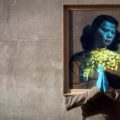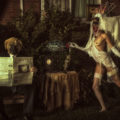Exploring how fine art photography can evoke emotions and tell stories through visual imagery
There’s a moment—just before you click the camera’s shutter—where the world seems to hold its breath. Light slows. Shadows pause. Time flirts with something resembling eternity. That moment is where fine art photography lives. It’s more than focus, more than exposure, more than a pretty picture. It is emotional architecture built out of pixels and feelings. In the trembling between awareness and image, fine art photography becomes story, becomes mirror, becomes wound and remedy all at once.
In this deep-dive feature, we’ll take a trip through galleries, darkrooms, and human memory, as we try to understand how fine art photography pierces through the retina and lodges itself in the heart.
What Makes Fine Art Photography “Fine”
Before we wander into valleys of feeling, let’s sketch a map. What distinguishes fine art photography from mere documentation, vacation snapshots, or stock-images of breakfast?
- Intention over function: The photographer isn’t trying merely to record “this is what that looked like,” but rather “this is what I felt, or want you to feel, looking at this.”
- Aesthetic consciousness: Composition, light, color, tonal mood, framing, abstraction—all tools employed not just for accuracy but for resonance.
- Narrative possibility: Either explicit or implied. Sometimes it’s a series; often it’s a single frame. But always there’s the whisper that something more lurks beyond the visible: memory, myth, longing.
In short, fine art photography is the intersection: where technique meets emotion, where the visible meets the invisible.
Fine art photography is less about what the eye can measure and more about what the soul can register. The camera becomes a conduit, an instrument through which the photographer’s vision, their obsessions, their quiet rages and tenderness, are made visible. It isn’t a ledger of reality, nor a billboard to be sold—it is a manifesto written in light and shadow. Every choice—the tilt of a horizon, the whisper of grain, the ache of a filtered glow—is deliberate, a gesture toward meaning that exists only in the collision of intention and perception. This is photography as a dialogue, as a reckoning, as something that aches to be felt.
The Brain on Images:
Why We Feel Before We Think
You don’t study an image; you feel it. That’s science, not just poetics. Cognitive psychology tells us that the brain’s emotional centers actually respond to visual stimuli faster than they do even to language. Facial expressions, color cues, contrast, composition—these fire synapses in the amygdala and related regions, stirring something visceral.
Even more: images serve as cues for memory. A crooked fence in twilight, peeling paint, a lone figure on the horizon—they may have nothing to do with your past, but they echo archetypes or fragments of memory. The hippocampus lights up; you feel nostalgia, or fear, or peace.
So, when fine art photography hits home, it bypasses your reason for a moment and goes straight for your gut.
How Photographers Build Emotional Punch
If the emotional effect is the thunder, fine art photographers are the lightning rods. Here are the typical components in their arsenal:
- Light & Shadow
Light can soothe; harsh light can convict. Soft, diffused glow brings warmth, intimacy, nostalgia. Deep shadows, high contrast—drama, tension, mystery. Think chiaroscuro, or an overcast sky which can feel like regret made visible. - Color, Tone, and Saturation
We are color-coded, whether we like it or not. Warm tones (reds, golds, yellows) pulse with energy, desire, even danger. Cool ones (blues, greens, greys) can hush us, make us think sad thoughts, calm ones, or contemplative. Desaturation (or going black & white) removes distractions—it amplifies texture, contrast, emotion. - Composition & Framing
Where you put things in the frame matters. Rule of thirds, negative space, leading lines, perspective—all of these guide the viewer’s eye, shape the emotional journey. A subject off-centre can feel lonely, vulnerable. A low angle can make someone heroic (or menacing). A wide shot with small figures can evoke insignificance or awe. - Subject & Gesture
Human faces, body language: we read them without thinking. Micro-expressions, posture, even small details (hands, eyes) reveal inner storms. Non-human subjects matter too—landscapes, objects, abstraction—but usually those are emotional through what they symbolise or reflect back to human condition. - Narrative & Context
Stories aren’t always told in words. Fine art photographers often drop hints: environment, texture, light, age, props. These hint at something personal, political, mythic. Viewers fill in the blanks. Memory, empathy, culture all play parts. - Post-processing & Editing Choices
You can polish too much—or just enough. Grain, blur, selective focus, vignettes, contrast tweaks—all of these tools either preserve rawness or stylise it, pushing the emotional temperature. A photograph that feels “manufactured” sometimes loses its power; one that feels raw, a little flawed, often gains intimacy.
Stories Without Words
Some of the most powerful photographs are silent novels. A single frame might tell of history, of suffering, of hope. Dorothea Lange’s Migrant Mother. Steve McCurry’s Afghan Girl. Classic documentary images that go beyond news—they become symbols. They haunt collective memory.
Fine art photography often walks that line: part documentation, part metaphor. A battered chair in an empty room isn’t just furniture; it might speak of absence, abandonment. A cracked sidewalk catches light in morning haze—not only geometry, but persistence, decay, the stories our cities hold. The photographer who sees and frames that invites the viewer to imagine what happened, who was there, what was lost—or what remains.
Varieties of Emotional Resonance
Not all emotion is the same. Good photographs can evoke different types, sometimes multiple at once. Let’s name a few, for clarity:
- Awe / Sublime: Monumental landscapes, vast scales, extremes of nature. Small human figure, wide vistas, sky.
- Melancholy / Longing / Nostalgia: Faded color, soft light, subjects turned away, old objects, decay, twilight.
- Joy / Ecstasy / Energy: Bright light, vibrant colors, dynamic motion, celebration.
- Fear / Unease / Tension: Sharp contrasts, darkness, ambiguity, partial concealment, skewed perspective.
- Intimacy / Vulnerability: Close-ups, softness, unguarded moments, eye contact (or its absence), quiet interiors.
A single fine art photograph might blend several—joy laced with sadness, awe tinged with anxiety. That tension is often what makes the image unforgettable.
The Photographer as Storyteller, Confessor, and Mirror
Fine art photographers don’t just record; they confess, they pry and they reflect.
- They bring their own life: their joys, scars, obsessions. The places they’ve been, the relationships lost or saved, the nights spent sleepless with doubt. This internal world bleeds into the external world they frame.
- They choose symbolism: objects, settings, signs that carry weight (weathered wood, torn fabric, peeling paint, empty chairs). These are the cues that invite interpretation.
- They embrace ambiguity: not everything must be explained. Sometimes the shadows should keep secrets. Mystery often gives more room for the viewer’s emotions to move, wander, connect.
That’s the wild part: the photograph stops being theirs once it’s shown. It becomes a shared experience. Your life, your memories, your fears—all get glimpsed in the frame. The photographer sets the stage; the viewer fills in the role.
Why Fine Art Photography Matters
(Beyond Galleries & Likes)
You might think: “Cool, this is all very aesthetic, but who cares?” Here’s why it matters:
- Empathy & Connection: Emotional imagery lets us touch someone else’s pain, joy, history. It opens windows into lives unlike ours—or reminds us that someone, somewhere, feels the way we do.
- Cultural Memory & Identity: Strong photographs become part of collective narratives: documenting social change, preserving vanishing traditions, giving voice to the marginalized. A photo can be a protest, a elegy, a shout.
- Self-Reflection & Healing: For both creator and viewer. Seeing one’s own feelings mirrored back—loss, hope, uncertainty—can be affirming, cathartic. Fine art photography often functions like therapy: a way to process invisible things.
- Challenging Perception & Assumptions: Especially when images unsettle or provoke. When beauty is ugly, or ugly is beautiful, when light is harsh, when framing challenges the expected—it forces us to question what we accept, what we ignore.
- Aesthetic Pleasure & the Sublime: Yes, we like pretty things. But beyond pretty, images that surprise, overwhelm, humble or rejoice in the details—these give us something richer: the sublime, the emotional thunderclap.
The Risk:
Emotional Manipulation vs Authentic Resonance
With great power comes great responsibility. Fine art photography can manipulate. It can sentimentalize. It can aestheticize suffering in a way that distances rather than engages. The ethical dimension matters.
- When images turn trauma into spectacle, or pain into decor.
- When the photographer extracts emotion without engaging with the dignity of subjects or story.
- When editing, framing, titling are used to mislead, exploit, or simplify complex human experiences.
Authenticity matters. Vulnerability matters. Respect matters. The best photographs are those that honor both the subject and the viewer, offering more than consumption—offering communion.
Case Studies of Emotional Fine Art Photography
To bring this from theory to breath: a few examples.
How to Read a Photograph: What to Look For
If you go into a gallery or scroll through a fine art photography book, here’s how to really see—not just look.
- First impression: what do you feel before you think? Don’t censor it.
- Light & Tone: Is it harsh, soft, diffused, shadowed? Where are the highlights? Where are the darks?
- Color (if any): Warm, cold, muted, saturated. What mood does the palette set?
- Composition: Where’s the subject? Is the frame tight or expansive? What’s in the background? Are there symbols you recognise? Negative space, leading lines, symmetry/asymmetry.
- Gesture & Expression: If there are people, what are their faces, postures, gazes doing? If not, what objects or shapes take over?
- Context & Title: Sometimes the title or the description shifts everything. Titles are not decorations—they’re signposts.
- Ambiguity & Tension: What’s missing? What’s hidden? What’s untold? Often the unsaid is more powerful.
The Emotional Impact of Fine Art Photography
Fine art photography’s emotional impact is not random. It is crafted. And for anyone seeking out just what the emotional impact fine art photography might be, you’re probably wanting to know not only that such evocation of emotions are possible, but how they are evoked, why they move us, which techniques photographers use, which themes resonate most across cultures, and how authenticity (vs manipulation) plays in.
So, here’s a cheat sheet:
Themes that evoke emotion: solitude, identity, loss, longing, nature vs man, decay, memory, intimacy, outsider experiences.
Techniques: light & shadow contrast; color mood; framing and perspective; scale; texture; selective detail; minimalism.
Authenticity is key: genuine moments (even in staged work), vulnerability of subject, honesty in editing.
Ambiguity sells feeling: leaving space for viewer’s projection increases emotional resonance.
Story matters: whether a series or a single image, narrative (even implied) grounds emotion.
Conclusion: The Heartbeat Behind the Frame
Fine art photography is where light becomes confession, silence becomes story, flickers of life become universal myth. It is not sugar-coated; it is not always beautiful. It is honest. It is sometimes raw. It’s the way a cracked window might tell you everything about a room, or a distant mountain might sing to your smallness.
If you look long enough at a powerful photograph, you find yourself. Sometimes you see what you were avoiding. Sometimes what you hoped. And sometimes what you needed to remember.
So go ahead. Look deeply. Feel regardless. Let the photograph speak—even when it whispers. Because the emotional impact of fine art photography is not just what you see. It’s what you carry afterward.
Further Reading & Suggested links:
- The Role of Emotion in Fine Art Photography
Creating impactful visuals - The Center for Creative Photography
The combined art, archival, and research collections at the Center provide an unparalleled resource for research, exhibitions, loans, and travelling exhibitions. - Black and White Fine Art Photography
Advanced tips from photographer Joel Tjintjelaar - N… Is For Joseph Nicéphore Niépce
Creator of the very first photograph ever taken. - Introduction to Fine Art Wildlife Photography
By fine art photographer Ishan Shanavas.











